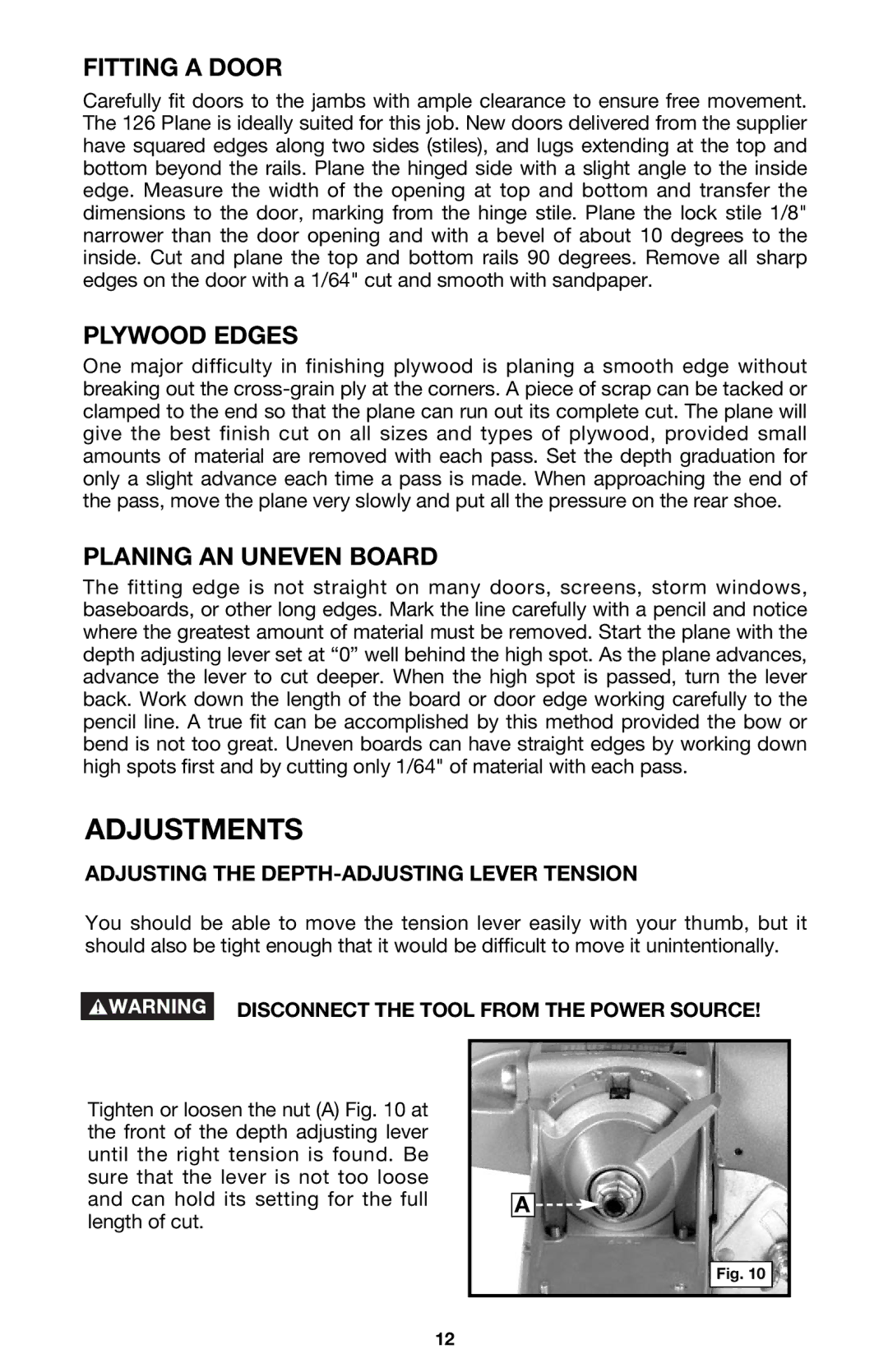126 specifications
The Porter-Cable 126 is a versatile and powerful tool designed for both professionals and hobbyists in the woodworking and construction industries. This dependable machine is particularly recognized for its efficiency and ease of use, making it a preferred choice among carpenters and DIY enthusiasts alike.One of the main features of the Porter-Cable 126 is its robust motor, which delivers an impressive performance, allowing users to tackle a wide range of applications. With a reliable power output, the tool can handle heavy-duty tasks with ease, whether it's for cutting, drilling, or fastening. This capability makes it suitable for both light and heavy materials, enhancing the versatility of the tool.
Another notable aspect of the Porter-Cable 126 is its user-friendly design. The tool is engineered with a comfortable grip, ensuring that operators can maintain control even during extended use. The balance and weight distribution have been optimized to reduce fatigue, providing users with the ability to work longer without discomfort. This is particularly important for professionals who rely on the tool for day-to-day operations.
The technology embedded within the Porter-Cable 126 further enhances its performance. It features a powerful and efficient motor that operates at high RPMs, providing exceptional cutting speeds that help to improve overall productivity. Additionally, its precision engineering ensures that users achieve accurate results, making it an ideal choice for detailed woodworking tasks.
Safety features are also an integral part of the Porter-Cable 126's design. Equipped with protective guards and a safety switch, the tool helps to minimize the risk of accidents, which is crucial when working with sharp blades and heavy materials. This commitment to safety allows users to focus on their tasks with confidence.
Furthermore, the Porter-Cable 126 is compatible with a wide range of attachments and accessories, making it highly adaptable for various projects. Whether users are engaged in woodworking, metalworking, or general construction, the tool can accommodate different needs and preferences.
In conclusion, the Porter-Cable 126 stands out as a reliable and powerful tool in the market, characterized by its strong motor, user-friendly design, advanced technology, and emphasis on safety. Its versatility and adaptability make it an essential addition to any workshop, catering to a diverse array of projects with efficiency and precision. Whether used by professionals or DIY enthusiasts, the Porter-Cable 126 is poised to deliver excellent results.

